In 1872, Bram Stoker, the author of Dracula, wrote a raw, gushing fan letter to his poetry idol, Walt Whitman.
But it wasn’t until four years later that Stoker would finally have the guts to mail it, along with an introduction letter — a letter within a letter — beginning with: “If you are the man I take you to be you will like to get this letter.”
In four separate instances in his missive, Stoker instructs Whitman to place both letters in the fire “without reading any further,” if “this” is a mistake.
Strange and cryptic. And with a tragic backstory.
Join us in a heart-wrenching exploration of vampires, art, and the fight to be yourself when being yourself is illegal.
Dracula and Carmilla were published about 150 years ago, but still: SPOILER ALERT.
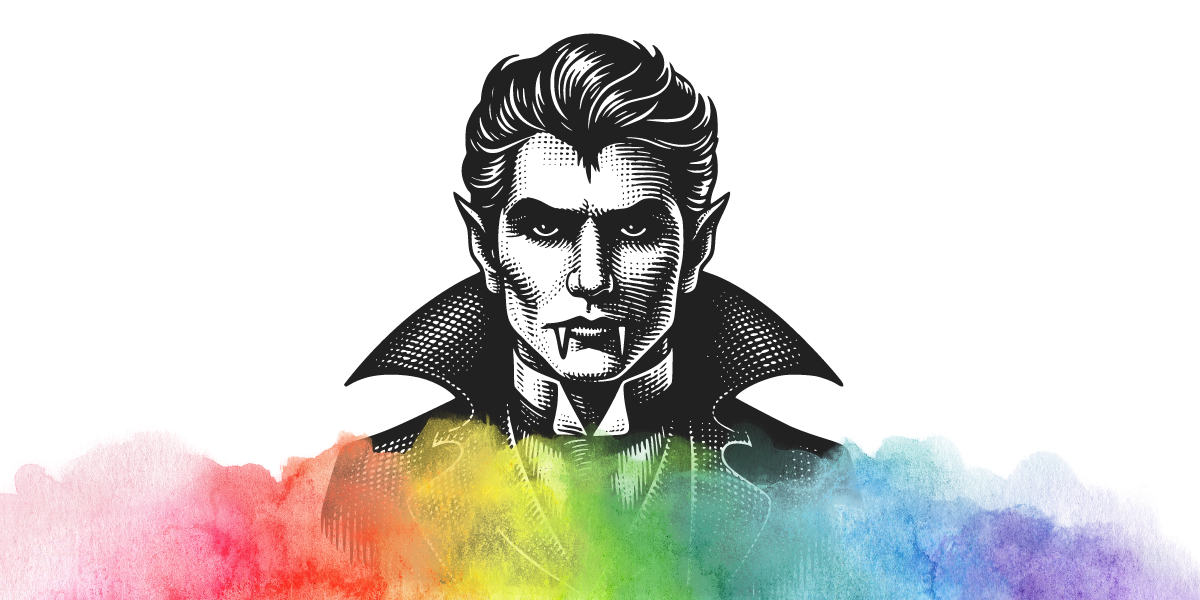
It’s hard to imagine the writer of Dracula — Mr. Doom and Gloom — crossing paths with Whitman, the great American bard. What, exactly, impassioned Stoker enough to write from the heart to the new frontrunner of American poetry but then lock his words away, letting the paper sit in some box until he gained the courage to send it?
Once he did finally send the letter, there must have been a certain agony in waiting for a response. To gain some inkling of what Stoker felt, I whipped out my own version of Whitman’s Leaves of Grass, sitting on a blanket in the summer, the way I imagine Whitman would want his poetry read. Thumbing through, I can see within my own highlighting and fervid scribbling that Whitman once unlocked something within me — a new possibility pushing the limitations of language. A symphony of syntax and sexuality and “manly-love.”
Perhaps Stoker thought Whitman was writing directly to him in Leaves of Grass, as he called himself in his letter “a man living in an atmosphere prejudiced to the truths you sing and your manner of singing them.”
In fact, during a time of codified homophobia, Stoker writing to Whitman was a blatant act of defiance.
During a time of codified homophobia, Stoker writing to Whitman was a blatant act of defiance.
Homosexuality was a crime in England until 1960 — though it was added to the medical dictionary in 1909 as “the morbid sexual passion for one of the same sex.” (Heterosexuality wasn’t added to the dictionary until 1923, defined as “the morbid sexual passion for the opposite sex.”)
During Stoker’s upbringing in Ireland, occupied by the United Kingdom at that time, and his adulthood in England, opposite-sex relationships didn’t really have a name, except “normal.” But those in homosexual relationships drew the biblical label “sodomites” — and were punishable by law.
This was the tapestry of hate woven into Dracula’s cloak as Stoker traversed modern London through blood-red eyes and fanged teeth.
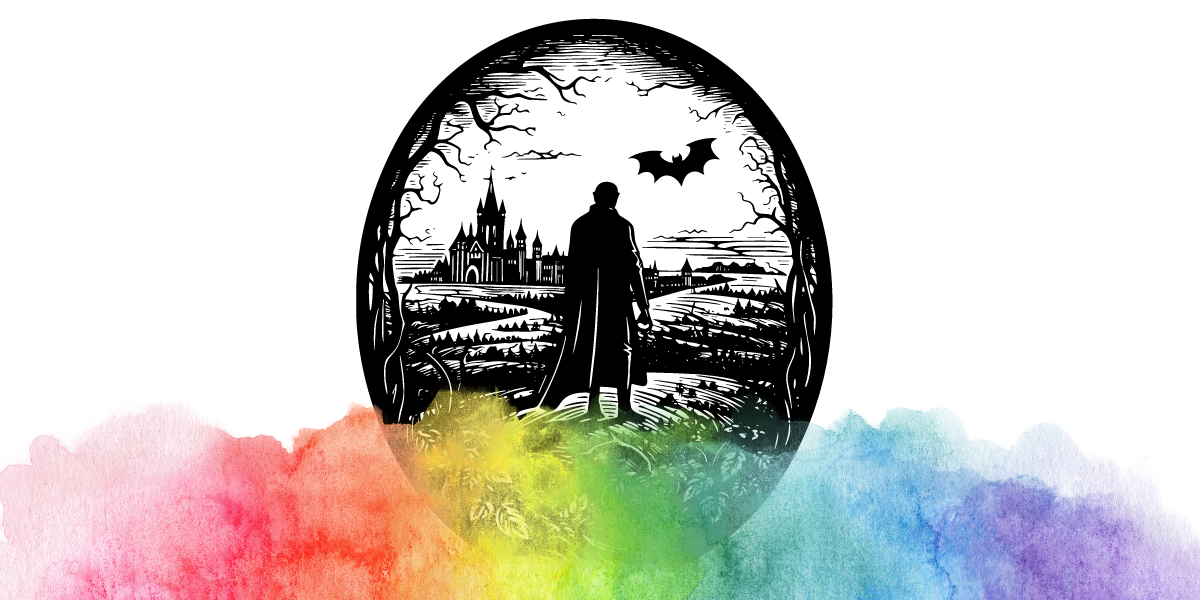
The Rise of the Vampire
You’re probably wondering what possessed Stoker to write a novel about a blood-sucking creature of night in the first place.
Stoker was born in 1847 in Dublin, Ireland. It was a nation steeped in ancient folklore, but also a time when up-and-coming grizzly medical practices and post-Enlightenment science-driven thought was flourishing.
Folklore and mythology still had a firm grip on Ireland, leading to several stereotypes we associate with witches and monsters today. Those who preferred to live by themselves in the woods, on the edges of society, were assumed to be practitioners of the dark arts, because how else would someone survive without a community if they weren’t in league with Satan?
To explain the high infant death rates, a common myth was that fairies would steal children from their cribs at night and leave a changeling behind, who would more times than not die by morning. Stoker himself was considered a “child who went with fairies,” given that he was unable to walk for the first seven years of his life, unexplained by medicine, and then, one day, could inexplicably run. (Years later, in his letter to Whitman, Stoker goes so far as to describe his physical appearance almost like a Victorian gay dating profile, placing emphasis on his athletic achievements and trophies.)
Stoker himself was considered a “child who went with fairies,” given that he was unable to walk for the first seven years of his life, unexplained by medicine, and then, one day, could inexplicably run.
When Stoker was 12, Charles Darwin’s On the Origin of Species by Means of Natural Selection was published, which bolstered the science vs. religion fervor by posing a new theory that went against the Christian creation myth. A loss of faith spread as old institutions failed the modern soul, and with new scientific knowledge having not yet replaced this gap, the human body transformed from a shrine of divinity to the bleak aftermath left on a dissecting table. The Resurrection Men (a.k.a. body snatchers) were active at this time. These grave robbers were usually paid under the table by scientists conducting illegal research on the human body.
Picture yourself in some quaint Irish town, waking up to do chores in the morning, only to see a grave busted open and a body stolen or, even more horrifying, dismembered for its most valuable parts. These fears paved the way for the introduction of ghouls — undead creatures who feast on human flesh — to the mythical canon.
Even before the Victorian ghoul, almost every known culture had some form of myth involving the undead. There were precursors to vampires throughout Africa, Ancient Rome, and the Middle East, myths that would later merge with historical figures also associated with blood, like Vlad the Impaler (nicknamed Dracul) and Countess Elizabeth Bathory de Ecsed, who allegedly bathed in tubs of virgin blood to retain her youth. This isn’t even counting the unidentified serial killer of 1888, Jack the Ripper, who stirred London into a frenzy by killing five women.
This was the stew of history, folklore, and contemporary news that saturated Stoker’s world as he began his writing career. Then along came Carmilla.
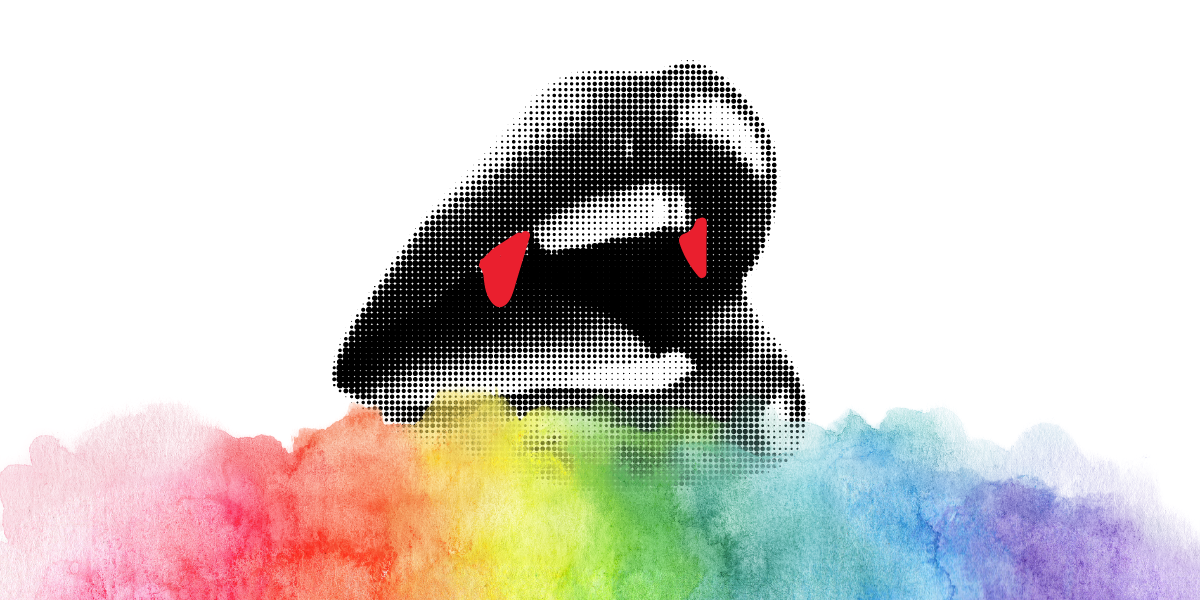
Carmilla Flew So Dracula Could Bite
Joseph Sheridan Le Fanu, a fellow Dubliner, was one of Stoker’s contemporaries. Though there is no written documentation of their meeting face to face, Le Fanu’s pinnacle work, Carmilla, was published in 1871, putting it in circulation sixteen years before the publication of Dracula.
Originally published as a serial, the narrative follows our protagonist, Laura, who finds herself haunted by an unknown figure, as well as the heteronormative pressures from a repressed society. The edition of Carmilla that I own includes an introduction by Carmen Maria Machado, who suggests Laura is “dead before the story begins.”
A carriage accident brings our characters together, and as Laura helps people escape the wreckage, she finds a woman named Carmilla, who has the face of the figure that haunts Laura. The women will spend time together eating luxurious foods and drinking fine wines, and eventually express their desires for one another — teetering between ferocity and tenderness, animal and human, liberation and constraint.
Eventually, Laura learns that “Carmilla” is a pseudonym for “Mircalla,” which is another pseudonym for a countess who lived for several hundred years. The novella ends with Carmilla’s disappearance, though the reader knows she was killed in true vampiric fashion with a stake through the heart.
Carmilla’s portrait of the vampire portrays an intimate possibility of a seductress who uses supernatural forces to affect others. Laura often falls under Carmilla’s spells, and Carmilla unlocks new feelings in Laura, like desire and guilt and repulsion, themes likely familiar to queer people of the time.
In true Gothic form, desire is its own character in the foreground and background of Carmilla, hidden in the dark rooms of the castle and by the dark night.
To me, Carmilla’s queerness comes off more as a cautionary tale of skirting temptations (as the author intended) rather than a full-on Song of Myself celebration like Stoker’s letter to Whitman. Still, vintage vampire fans will notice that the intimacy shared between Carmilla and Laura on the page is missing in Dracula. Yes, people fall under the count’s spells, and he has three brides despite having no rizz, but the intimate portrayals aren’t there.
And the reason for that is tragic. Though there were some examples of overt queerness in Victorian literature, London society would soon find out that there were very real consequences to living in truth.
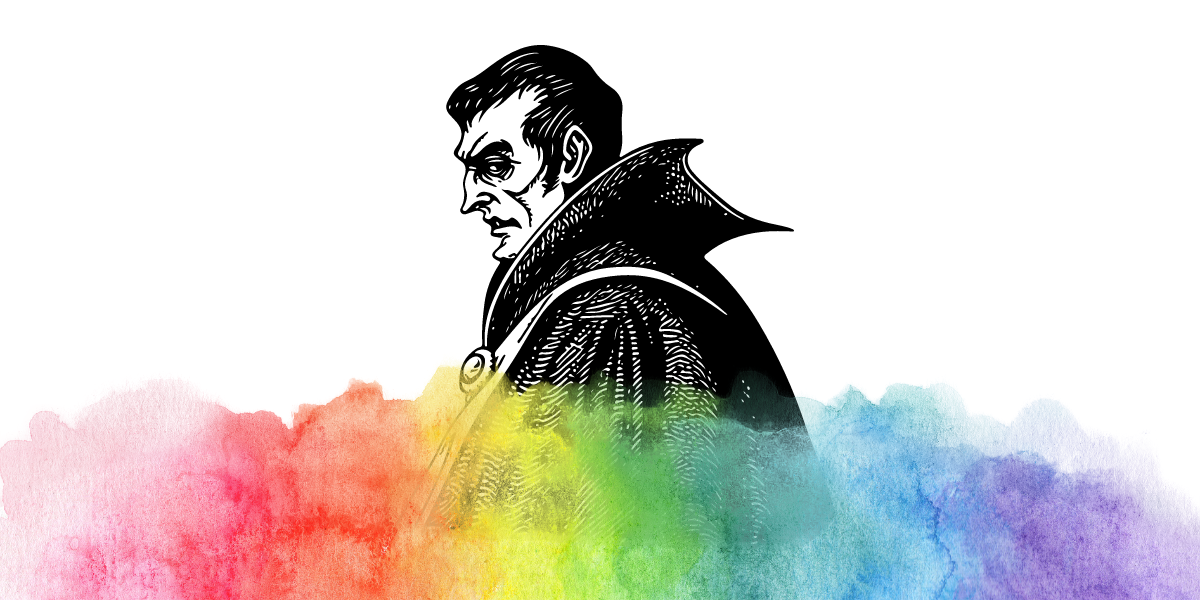
A Witch Hunt Begins
The Oscar Wilde trials were a prominent media frenzy during the seven years it took Stoker to write Dracula. As David Skal says in Something in the Blood: The Untold Story of Bram Stoker, the Man Who Wrote Dracula,
“It is no coincidence that Wilde was perceived as a sexual threat to London society at the same cultural moment Stoker created the greatest sex monster of all time.”
In fact, there are several allusions to Count Dracula having similarities to Wilde. If you look at portraits of Wilde — of which there are many, all of him being simply fabulous — you’ll see his gaunt face and luminous pale skin. Dracula is often described along these same lines. Additionally, both Wilde and Dracula had several residences around the city to divert suspicion from their “activities.” And both had men fall under their spells.
What was alarming to many people about the trials, especially writers, was the basis and findings. Wilde was seeing Lord Alfred Douglas, a fellow writer, and they were in pretty deep — gallivanting around town and infusing their works with homoerotic subtext or, in most cases, blatant text. Douglas’s father was a nobleman of Queensberry who hated the idea of his son being with another man and made a spectacle of suing Wilde under the charges of libel and sodomy. Queensberry’s attorneys brought in specific passages from Wilde's The Picture of Dorian Gray to support their claim, which, ultimately, combined with testimony and other evidence, like handwritten love letters, put the final nail in the coffin for Wilde — so to speak.
Ultimately, Wilde’s conviction kicked off a witch-hunt prosecution of “sodomites” at all levels of British society. This anti-Wilde homophobia rampaged through all forms of the arts, leaving those impacted, like Wilde, with nothing.
But writers were now even more concerned about one thing in particular: the court precedent of trying writers on their written words, especially those of novels. How could fictional fragments cherry-picked from a manuscript support a court ruling?
How could fictional fragments cherry-picked from a manuscript support a court ruling?
Stoker himself scrubbed Dracula of any allusions to high society that could be conceived as Wilde-esque. In one draft of Dracula, the vampires fed on their same-sex counterparts. This, of course, was deemed promiscuous and too risky — it could provide proof in court on the level of The Picture of Dorian Gray.
Sometimes it is easier to make someone or something into a monster than to admit there is something monstrous about ourselves — especially in a public that reinforces the idea that there is safety in staying concealed in the shadows.
Sometimes it is easier to make someone or something into a monster than to admit there is something monstrous about ourselves — especially in a public that reinforces the idea that there is safety in staying concealed in the shadows.
Like the vampire, queerness and queer people lived, and sometimes continue to live, on the edge of society. Carmilla was gay, so, yes, the vampire has always been gay. Meanwhile, Dracula is coded as gay and yet surrounded by a diorama of homophobia that diminishes his true potential.
All because Stoker anxiously removed any pieces that could be preserved as queer-coded. Those pieces were lost and, with them, perhaps a piece of Stoker.
Those pieces were lost and, with them, perhaps a piece of Stoker.
There is grief in that. A grief I’ll call history grief. A grief borne of the need, due to one’s place in time and social fabric, to diminish oneself in order to survive.
And if you’re looking for proof of some cosmic irony: Wilde was released from prison within two hours of the first reading of Dracula.
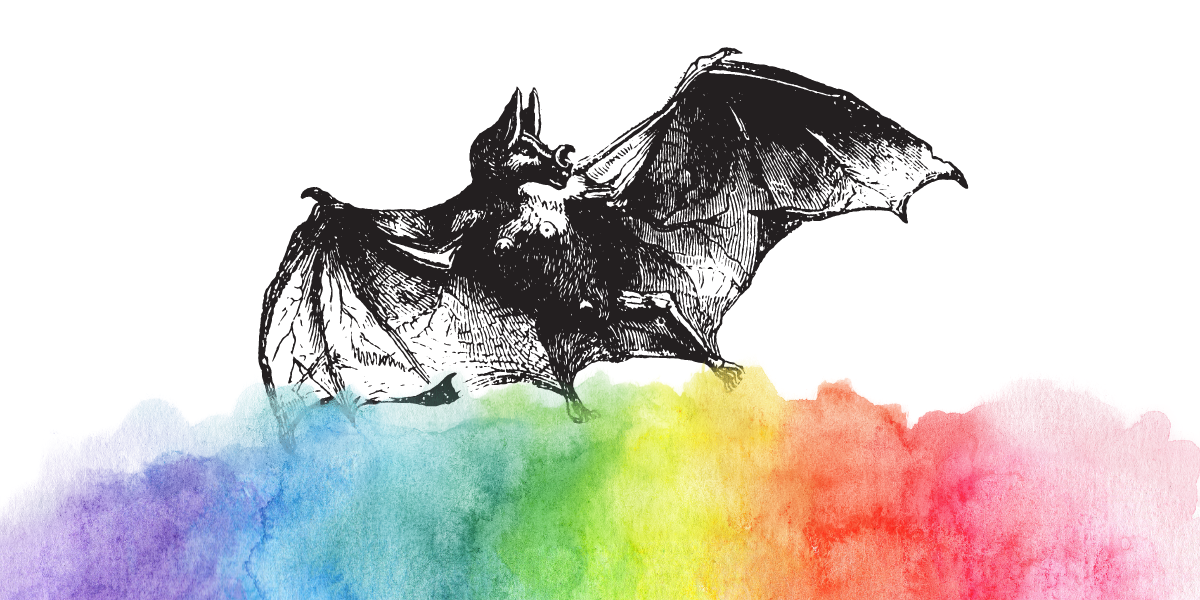
Whitman’s Response
The opening line of Something in the Blood reads: “There are no photographs of Bram Stoker smiling.”
I paged through the book, looking at the photos of Stoker. He’s deadpan, brutish, bearded — a shell juxtaposed with the enraptured letter writer that first drew me into the correspondence of two unlikely literary fellows.
A few weeks after Stoker sent his letter, he received Whitman’s reply. It is short compared to Stoker’s 2,000-word gushing message.
One of Whitman’s passages reads,
“You did so well to write to me so unconventionally, fresh, so manly, and affectionately too. I, too, hope (though it is not probable) that we will someday personally meet each other.”
But Whitman was wrong. The two would meet in 1884, at Whitman’s home in Philadelphia. They would describe each other as “giddy” and “excited to meet.” It’s hard not to picture Stoker with a smile when reading this, though, of course, there is no photograph.
Stoker and Whitman grew close, close enough that Stoker felt empowered to suggest line edits to Leaves of Grass — an impossible task, if you ask me — and Whitman felt the same. Stoker would not attend Whitman’s funeral in 1892 (five years before Dracula’s publication) but would return to the U.S. around 1894 to visit friends.
In fact, Whitman left him an envelope. Years later, Stoker would finally write about it, referring to it as his "Message from the Dead.”
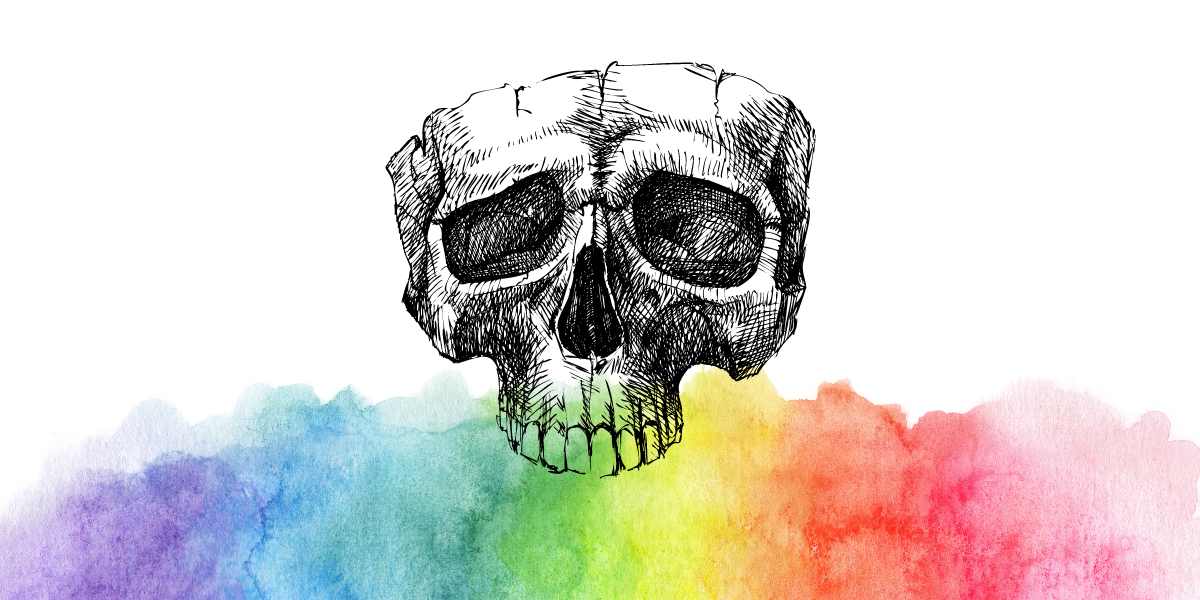
--
References
Schaffer, Talia. “A Wilde Desire Took Me: The Homoerotic History of Dracula.” JSTOR, 1994, www.jstor.org/stable/2873274.
Sheridan Le Fanu, Joseph: Carmilla. USA: Lanternfish Press, 2019.
Skal, David J: Something in the Blood: The Untold Story of Bram Stoker, the Man Who Wrote Dracula. USA: W.W. Norton, 2016.
Stoker, Bram: Dracula. USA: Back Bay Books, 2005.
Whitman, Walt, and John Hollander. Leaves of Grass: The Complete 1855 and 1891-92 Editions. Library of America, 2011.





















